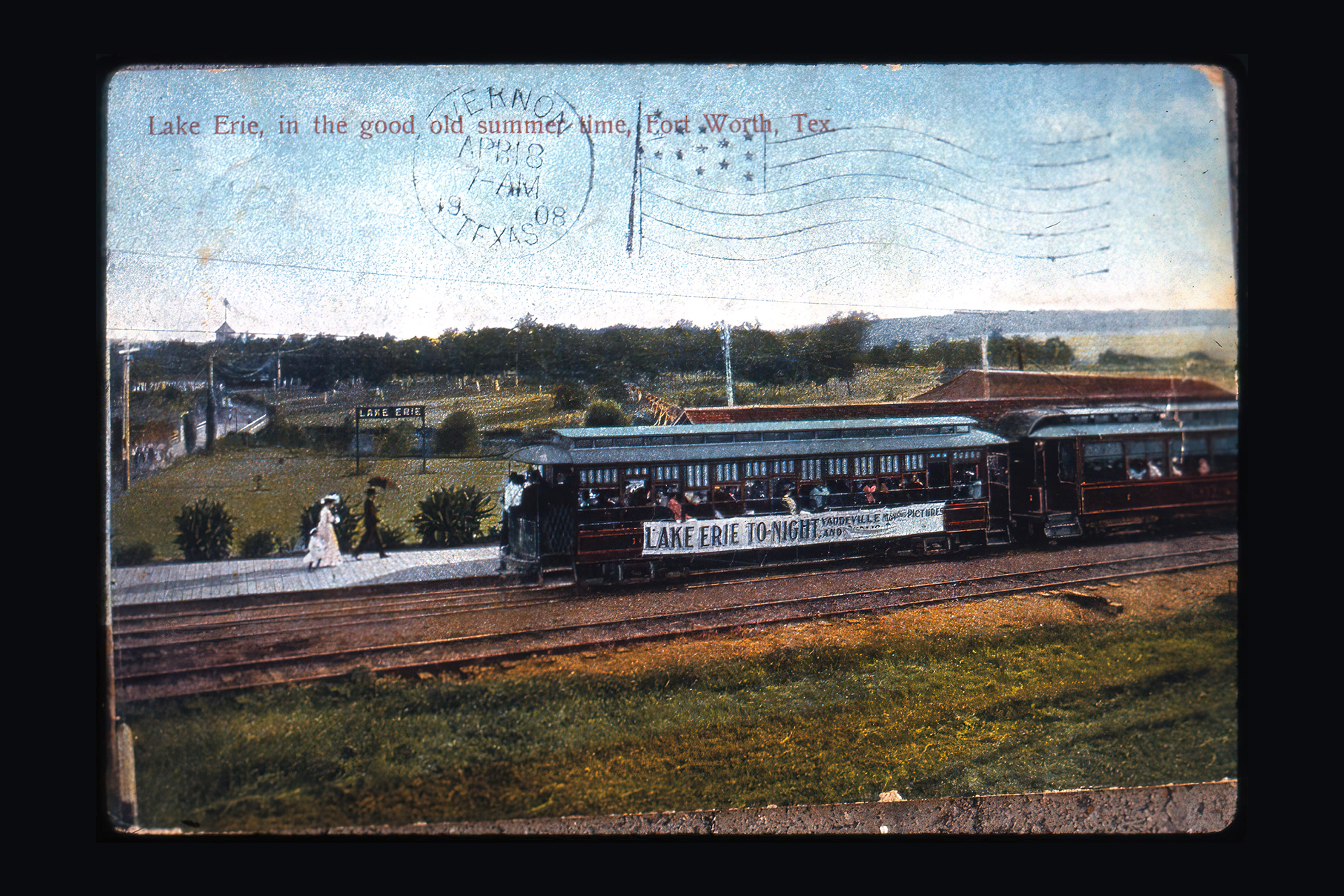
The Interurban Came to Texas in 1901 and to Arlington in 1902
This article appeared in a special edition of The Arlington Citizen-Journal published in February 1972, on the occasion of the 75th anniversary of the newspaper. It was written by Charles Hawkes (1921-2005), editor.
While area leaders puzzle over the best method of rapid public transit to relieve the ever-increasing volume of automobile traffic in the area, long-time residents of Arlington and this area can recall when the answer was in use—the Texas Traction Company’s electric trolleys—better known as the Interurban.
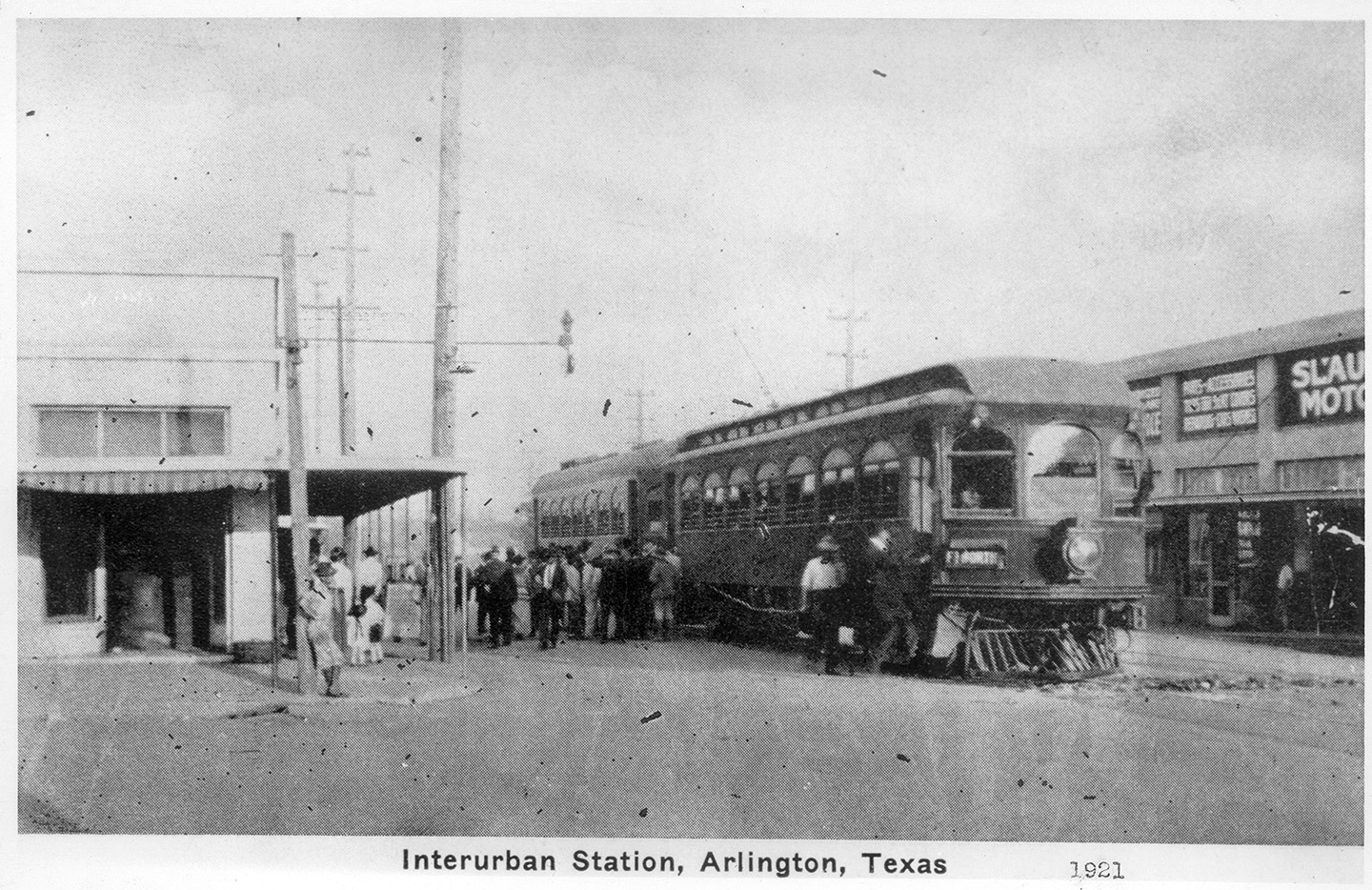
For 65 years the electric trolleys furnished fast, efficient, pollution-free, quiet, and relatively inexpensive travel for thousands of commuters and travelers throughout North Texas—which are about the attributes area leaders are looking for in mass transportation today.
The first service in North Texas was inaugurated on a line between Denison and Sherman on May 1, 1901. The second line was built from Dallas to Fort Worth, through Arlington, in 1902. Service here was discontinued on Christmas Eve, 1934, but the line continued to operate in other parts of the state for a longer period. Denison was the first, and the last, city to enjoy the service, the final run being made there on Dec. 31, 1948, marking the end of that era of transportation.
Shortages of materials during the World War II years contributed to the closing of the lines, but the swelling of production of automobiles and the advent of other, more sophisticated methods of transportation brought about the final closing down of the Interurban.
Mrs. Carolyn Snider of Arlington, in her talk about Arlington in the 1920s -1930s, likes to point out that since the Interurban ran right up the middle of Abram Street, many of the then plush homes of that era, particularly along West Abram, were built there so that homeowners might enjoy the convenience of the service, as well as sit on their front porches and watch the electric cars speed by.
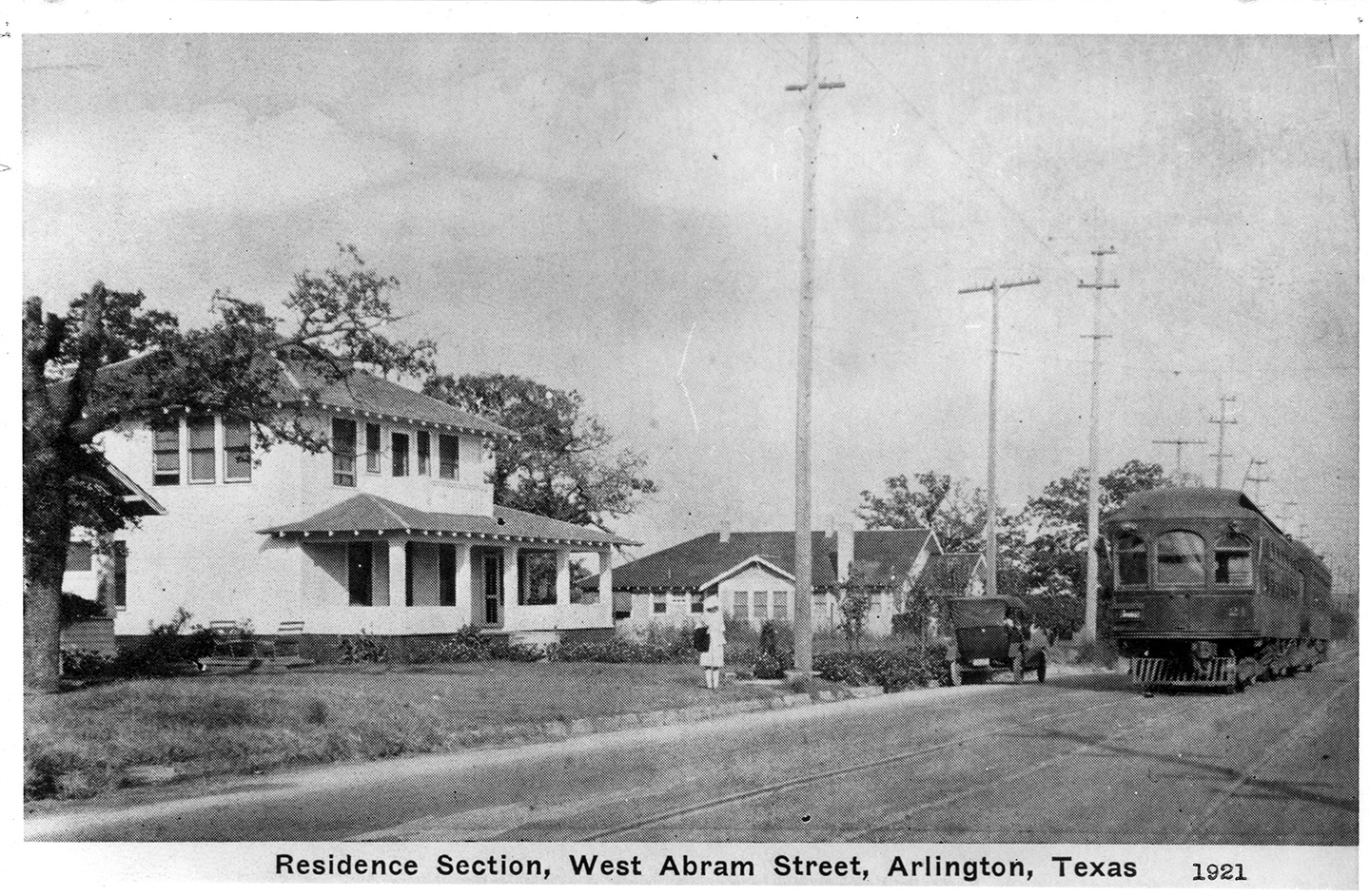
Cars ran as frequently as 30 minutes apart and traveled right into the downtown portions of Dallas and Fort Worth. The fare was 50 cents, round trip, but some savings could be effected by purchasing tokens. The station in Arlington was located at the intersection of Abram and Center, where the Texas Electric offices are now situated, but the cars made frequent stops along the line at other places— hence the origin of the name “Stop Six” in Fort Worth which persists to this day.
Arlington men who were boys in the 1920s like to recall that one of the favorite pranks of the day was to grease the rails at the hill along West Abram — in the vicinity of where the Citizen-Journal building is now located—causing westbound cars a great deal of difficulty. In fact, motormen often carried rags and “croaker sacks” on the car for emergencies such as removing axle grease from the rails.
When that first Interurban made its run between Denison and Sherman 71 years ago, the fare for the 10.5- mile ride was 25 cents. In only a short time, electric railways or “trolleys” began to provide convenient and quick travel between many other Texas cities.
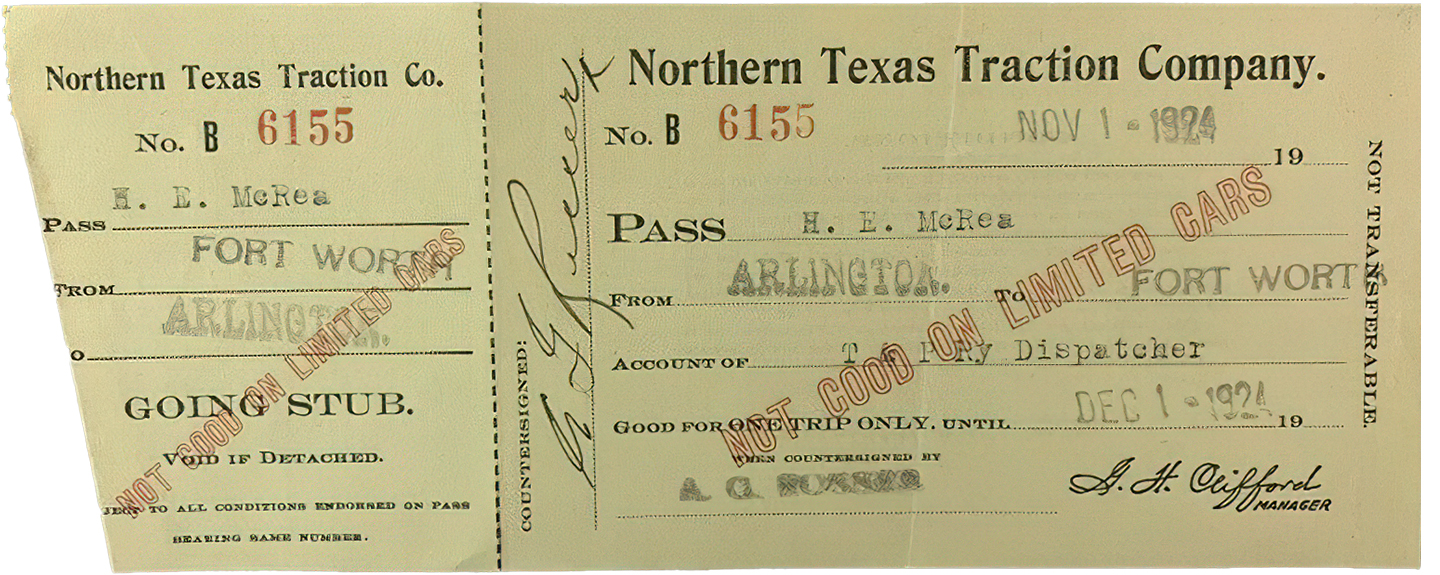
When out in the country, the 70-pound steel rails were laid on their own railbeds; in towns, the rails were laid in existing paved roads.
The Texas Traction Company dedicated its service “to promote travel, offer recreation and amusement, and special excursions.” Arlington old timers can remember when Sunday afternoon excursions were promoted to “Lake Erie” on the edge of the Handley area.
The Belton-Temple system was the third constructed in Texas and in 1909, the first line was extended to Waco, then later to Dallas. The route paralleled the present Dallas– Hillsboro-Waco highway route. Many of the large electric towers still along that route were first constructed for use by the traction company.
The coaches were powered by overhead cables, carrying direct current from 550 to 650 volts. Electricity was generated by power stations along the line. Each car had from two to four motors of 30 to 75 horsepower. Trailers and baggage cars could be coupled on when needed.
The line between Houston and Galveston came in 1911 and offered the most plush service in Texas. Each coach was 53 feet long, finished in Pullman green, art glass transoms, plate glass windows, leather upholstered seats, carpeted aisles, Honduras mahogany finish, and other interior features which contributed to a rich appearance. The cars were comfortably arranged with smoking and observation compartments being popular. And each car had its own copper spittoons and restrooms.
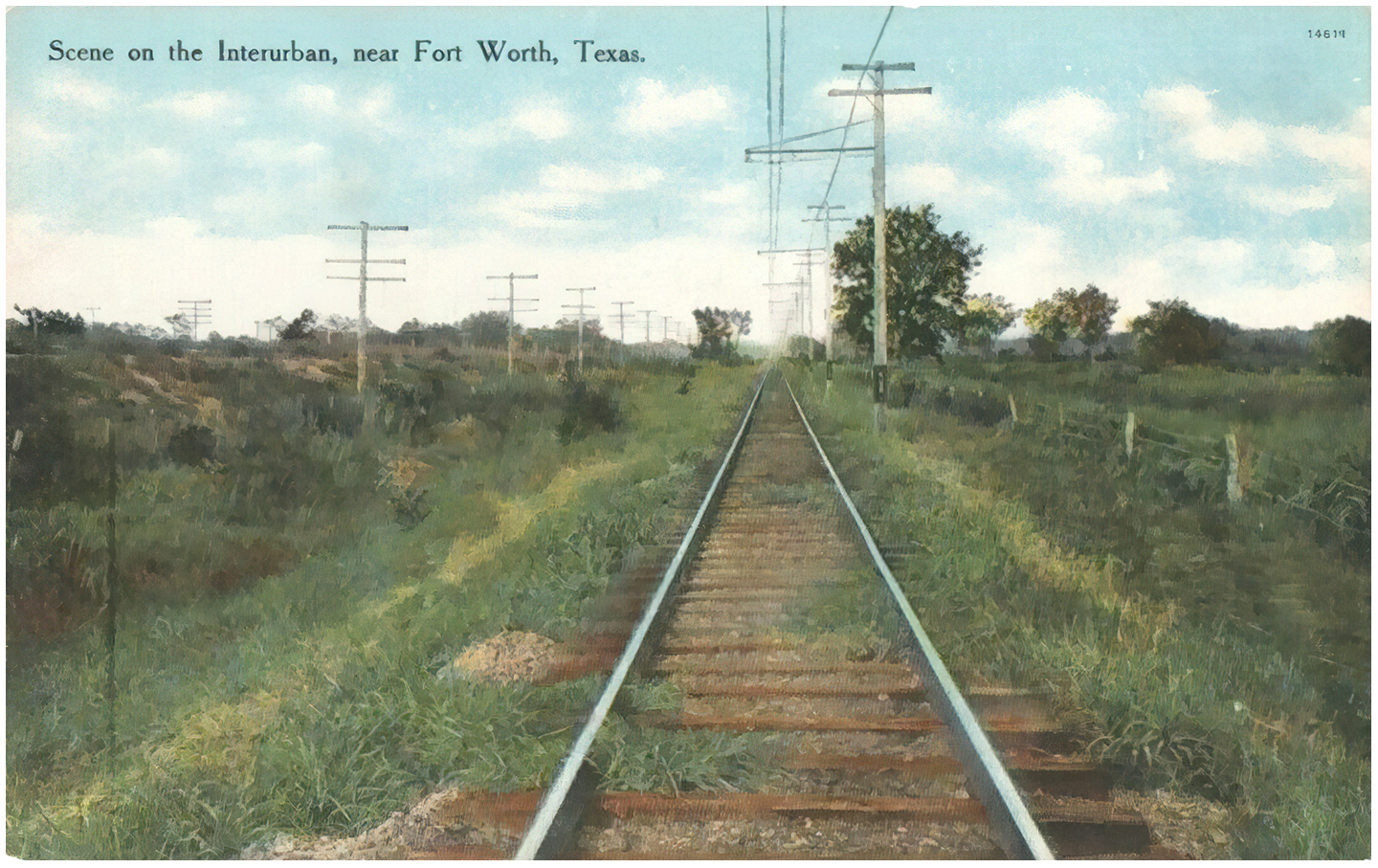
Other lines were formed to serve West Texas and remote areas of the state, some of which did not survive. The firms making up the Texas Traction Company and the Southern Traction Company were consolidated in July, 1916, under the name of the Texas Electric Railway.
In 1912, Fort Worth and Cleburne were linked by the electric transportation system and by 1914, the line was 134 miles long from Dallas to Waxahachie, Corsicana, and Waco. Later service was inaugurated between Beaumont and Port Arthur, El Paso and Ysleta, Houston and Baytown and Goose Creek.
There were 518 miles of electric interurban lines operating in Texas on January 1, 1931, even as far south as San Benito. The more frequent service, convenient stops within cities, and lower fares were advantages the steam railroads could not match. The Interurbans might rightfully be partly blamed for starting the decline of local passenger train travel in the state since many railroads ceased passenger service during those years.
The peak of Interurban prosperity came in 1920 when nearly 4 million passengers rode the electric trolleys, running up earnings for the company in excess of $1.5 million that year.
But the advent of more and more automobiles affected the electric interurban as much as it had affected the steam railroad, and another colorful era passed from the scene. By the end of 1948, interurban rail service in Texas was no more.
